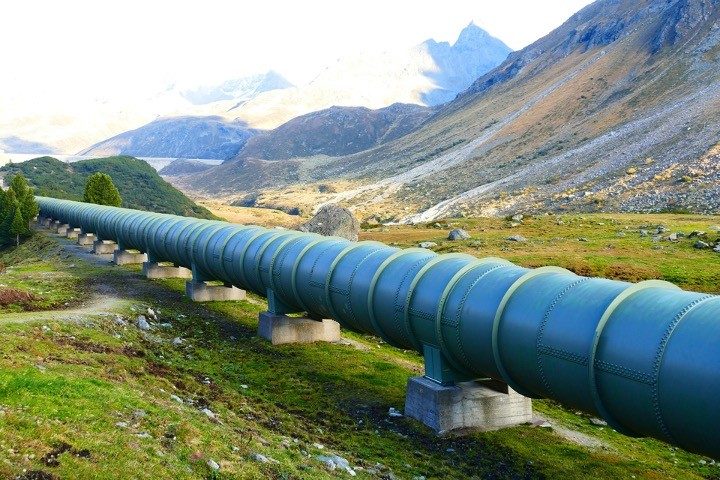
For the purpose of saving Mother Earth, Uncle Sam has dedicated billions of your taxpayer dollars to carbon capture and storage (CCS) and carbon dioxide removal (CDR). Let’s see how that investment is working out for you.
In case the terms are unfamiliar, CCS refers to technology that captures carbon dioxide (CO2) emitted from industrial facilities. CDR extracts CO2 directly from the air. In some cases, the captured CO2 is simply stored underground. In others it’s injected into depleted oil and gas wells in a process known as enhanced oil recovery (EOR), to extract more oil or gas from those wells.
As The New American has reported, there are already 5,000 miles of carbon capture pipeline in this country. However, in order to meet President Biden’s “Build Back Better” goals of carbon neutrality by the year 2050, experts estimate that between 30,000 and 60,000 miles of pipeline must be added.
Granted, this technology is nothing new. The Department of Transportation’s Pipeline and Hazardous Materials Safety Administration (PHMSA) has been regulating CO2 pipelines since 1991. Yet the lack of private investment in the technology over the past 30 years indicates the profitability — or lack thereof — of carbon capture.
Indeed, neither CCS nor CDR would exist without government subsidies. But now the administration is ramping up. The 2021 infrastructure bill included $2.1 billion to fund low-interest loans to CO2 pipeline expansion, over and above the $7 billion allotted to development of CCS and CDR technologies. Then there is the 45Q tax credit, courtesy of the Internal Revenue Service. Companies that implement CCS and CDR receive between $35 and $85 per ton of CO2 captured, depending on the technology employed and whether EOR is part of the mix.
Based on the technologies’ track record, CCS/CDR needed the bureaucratic jump-start. In 2000, the UN Intergovernmental Panel on Climate Change (IPCC) predicted that by 2020 we’d be capturing nearly 5,000 million tons of carbon dioxide per year. As is customary with United Nations climate-related predictions, that one fell short. In 2020, worldwide there were about 40 million tons being captured, according to the Global CCS Institute. Put in perspective, that’s roughly one tenth of one percent of the more than 37 billion tons of CO2 mankind emits every year, per Our World in Data metrics.
However, that doesn’t mean we’re reducing atmospheric carbon dioxide by 40 million tons. CCS and CDR are such energy-intensive processes, at the end of the day they are actually net carbon additive. We’ll discuss the numbers below.
But first, here’s another CCS prediction that fell flat: In 2009 the International Energy Agency (IEA) projected that there would be 100 large-scale CCS projects in operation by 2020. In its 2022 report, the Global CCS Institute said there are now 30 CCS projects in operation worldwide and 11 under construction.
The largest in the world is Australia’s Gorgon gas field, with a storage capacity of 4 million tons per year. (Keep in mind that the IPCC estimates we’ll need to capture about 10,000 million tons per annum if we’re going to save Mother Earth by 2050.)
How is Gorgon working out? Not so well. Between July 2016, when it began CCS operations, and July 2021, it stored a mere 5.5 million tons of CO2. The Guardian reported in July 2022: “Gas giant Chevron has fallen even further behind on targets to capture and store CO2 at its mega gas project in Western Australia, but has refused to say by how much. The company also confirmed on Friday it had bought and surrendered 5.23m tonnes of CO2 offsets to make up for the failure to meet its 2021 target at its CCS project at the offshore Gorgon gasfield in Western Australia.”
Canada is running into problems, too. CCS flagship technology, with a price tag of $1.35 billion, is located at Saskatchewan’s Boundary Dam Power Station. In April 2021 the utility SaskPower bragged that it had captured 4 million metric tons of CO2 since it opened in 2014. That’s seven years. Critics cried foul for two reasons: 1) because that amount fell far short of original predictions, and 2) most of the captured CO2 is used for enhanced oil recovery, which produces more oil, which is then processed and used, which produces more CO2.
Here in the United States we have two fantastic boondoggles. The Kemper Power Plant in Mississippi took twice the time and triple the expenses to build than originally forecast. To cut losses, the utility Southern Company pulled the plug, and the project was never completed. But in the meantime it cost taxpayers billions.
The other CCS face-plant occurred at Petra Nova in Thompsons, Texas. It fell so far short of its CCS goals and cost so much that operators shuttered it in 2020 after fewer than four years of operation — but after many billions of wasted taxpayer dollars.
As for CDR, or direct air capture as it is sometimes called, the reputed largest plant in the world is located in Switzerland. It goes by the name of Orca and at its launch in 2017, developers said it would grab 900 tons of carbon dioxide from the air each year. Not 900 million tons. Just 900 tons. They even put that in perspective by explaining that as the approximate amount released from 200 cars annually.
More recent reports on Orca gloss over what it is actually capturing and merely state that it has the capacity to capture and store up to 4,000 metric tons of CO2 per year. The technology was developed by Climeworks AG, which raised more than $800 million from investors for the purpose. And last summer they signed a 10-year deal with Microsoft. According to GeekWire:
On Wednesday, the company announced a 10-year deal with Microsoft to offset 10,000 tons of the software giant’s CO2 emissions. Microsoft, which has vowed to become carbon negative by 2030, last year invested in Climeworks through its $1 billion Climate Innovation Fund and made an initial offset purchase. This is Microsoft’s first long-term agreement with a tech company for carbon removal.
But it gets even better (or worse, for taxpayers). Climeworks AG reports that the energy consumption for one of their latest machines is approximately 2,650 kilowatt-hours per metric ton captured. That’s roughly equivalent to a quarter of the energy an average U.S. household consumes per year, according to the U.S. Energy Information Administration (EIA). And in order to generate that 2,650 kilowatt-hours to capture one ton of CO2, a coal power plant emits 2.4 metric tons of CO2, for a net add of 1.4 metric tons. Natural gas plants fare slightly better but are still net additive; they emit 1.5 metric tons of CO2 for every one ton that Climeworks AG captures.
So that means Microsoft, which will continue emitting CO2, will be able to call itself climate neutral because of investments in companies like Climeworks AG, while the latter emits more carbon dioxide than it captures.
Microsoft’s investment, Mr. Taxpayer, is better than yours.




